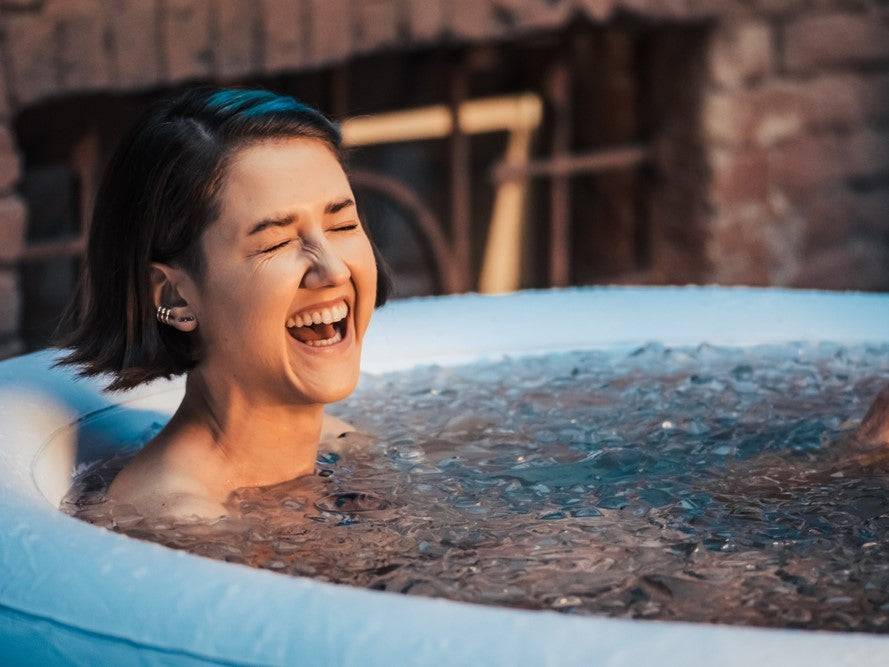
Cold Therapy is not just a trend, it's the real deal for modern recovery
Cold therapy is not just a trend; it's the real deal for modern recovery. The benefits of cold immersion after heat exposure are backed by science and have shown real, tangible results in enhancing physical and mental well-being. One of the most effective methods to harness these benefits is the hot-cold circuit, a sequence of sauna, cold plunge, and rest. Rooted in traditional Nordic spas, this method offers profound advantages for recovery, stress reduction, and overall health. Let’s dive into the details of how the hot-cold circuit works and the science behind its benefits.
The Hot-Cold Circuit: An Overview The hot-cold circuit is a therapeutic routine that alternates between heat exposure in a sauna, immersion in a cold plunge, and a period of rest. This cycle is typically repeated several times, allowing the body to experience and adapt to extreme temperature changes, which stimulate various physiological responses beneficial for recovery.
The combination of heat, cold, and rest significantly reduces stress levels, promoting mental clarity and a sense of well-being. Regular sessions counteract the physical strain of daily activities, improving overall physical well-being. For those who engage in physical exercise, this circuit expedites recovery and improves performance by reducing muscle soreness and promoting efficient muscle repair. Additionally, the contrasting temperatures can enhance immune function by stimulating the production of white blood cells and improving circulation.
Pro Tips:
The Hot-Cold Circuit: An Overview The hot-cold circuit is a therapeutic routine that alternates between heat exposure in a sauna, immersion in a cold plunge, and a period of rest. This cycle is typically repeated several times, allowing the body to experience and adapt to extreme temperature changes, which stimulate various physiological responses beneficial for recovery.
- Sauna: The Heat Phase The first phase involves spending time in a sauna, with temperatures ranging from 150°F to 195°F (65°C to 90°C). This heat exposure improves circulation by causing blood vessels to dilate, which enhances blood flow and oxygen delivery to muscles and tissues. It also promotes detoxification as sweating helps to eliminate toxins from the body. Additionally, the warmth soothes muscle tension and reduces stiffness, which is beneficial for both relaxation and recovery.
- Cold Plunge: The Cold Phase Following the sauna session, the next step is a cold plunge, where the body is immersed in cold water, typically between 50°F to 59°F (10°C to 15°C). This cold exposure reduces inflammation, helping to decrease swelling and inflammation, which is essential for recovery after intense physical activity. The cold water immersion aids in muscle repair and reduces soreness by constricting blood vessels and reducing metabolic activity. Moreover, the sudden temperature drop improves circulation by causing blood vessels to constrict, promoting efficient blood flow when the body warms up again.
- Rest: The Recovery Phase The final phase of the circuit is a rest period, allowing the body to stabilize and integrate the benefits of the hot and cold exposures. During this phase, the heart rate returns to a resting state, and the body calms down, promoting relaxation. The parasympathetic nervous system is activated, encouraging rest, digestion, and recovery. Overall, the body finds equilibrium, making it ready for the next cycle or for ending the session.
The combination of heat, cold, and rest significantly reduces stress levels, promoting mental clarity and a sense of well-being. Regular sessions counteract the physical strain of daily activities, improving overall physical well-being. For those who engage in physical exercise, this circuit expedites recovery and improves performance by reducing muscle soreness and promoting efficient muscle repair. Additionally, the contrasting temperatures can enhance immune function by stimulating the production of white blood cells and improving circulation.
Pro Tips:
- Start Slow: Begin with shorter sessions and gradually increase exposure time as your body adapts to the temperature changes.
- Stay Hydrated: Ensure you are well-hydrated before and after the sessions to support the detoxification process and maintain overall health.
- Listen to Your Body: Pay attention to how your body responds and adjust the duration and intensity of each phase accordingly to avoid over-stressing yourself.
- Consistency is Key: Regular practice is essential to reap the full benefits of the hot-cold circuit, so make it a routine part of your spa visits.
